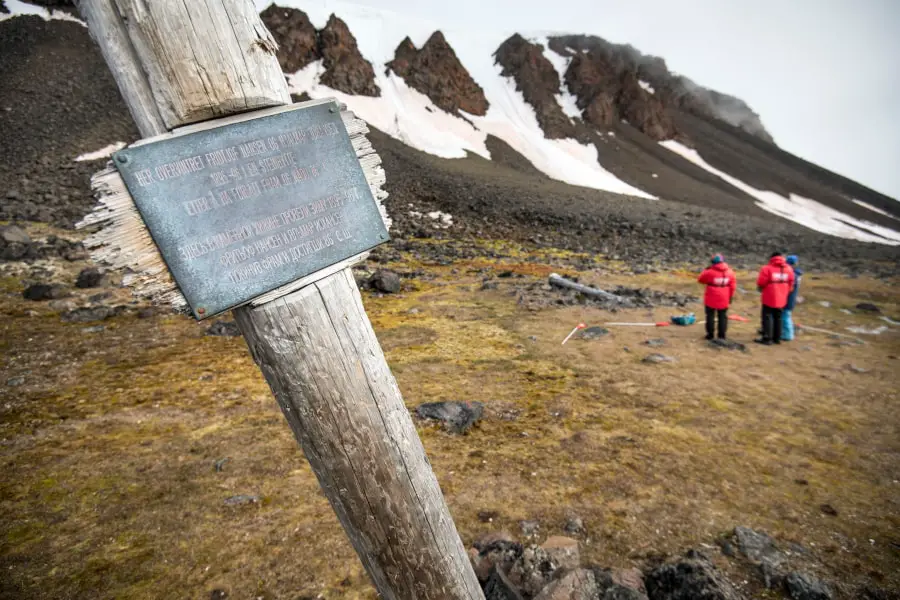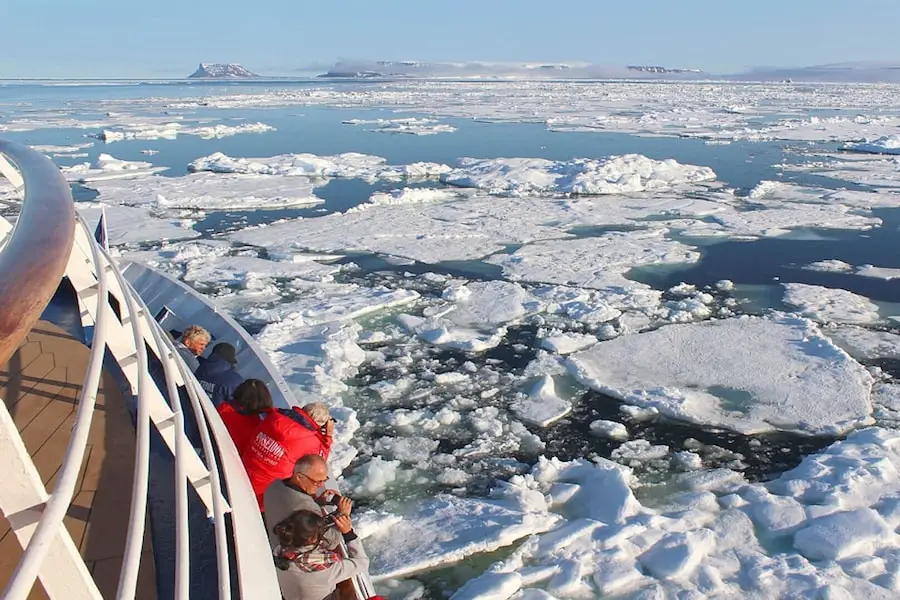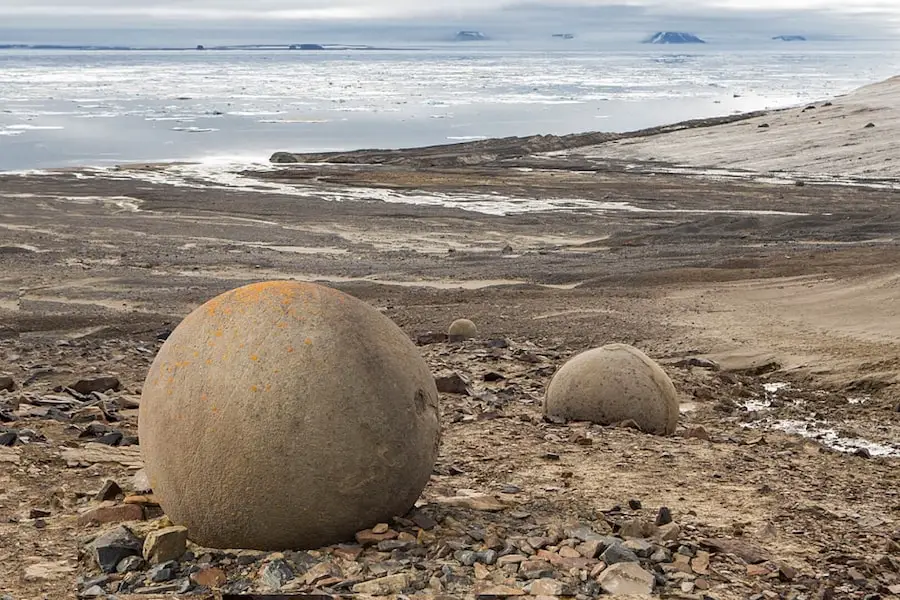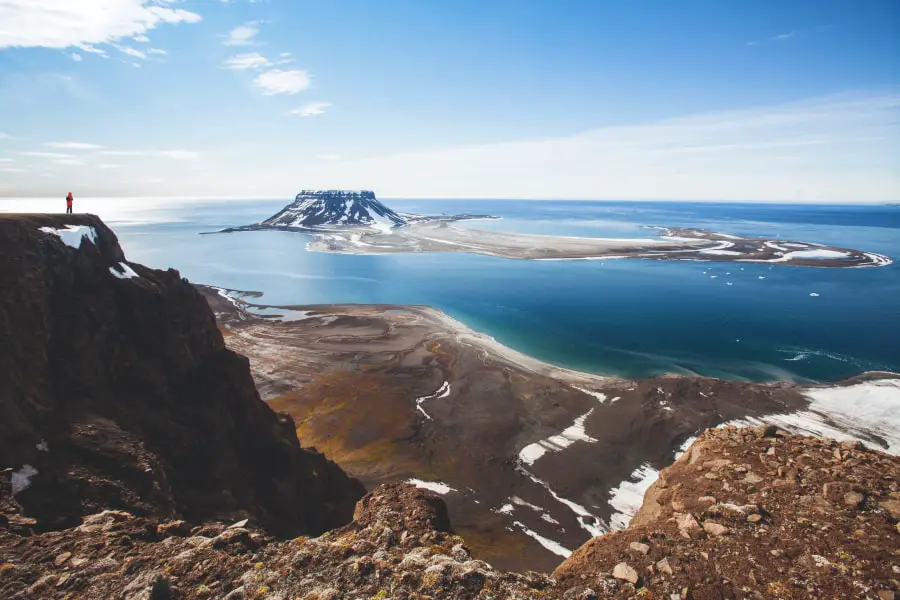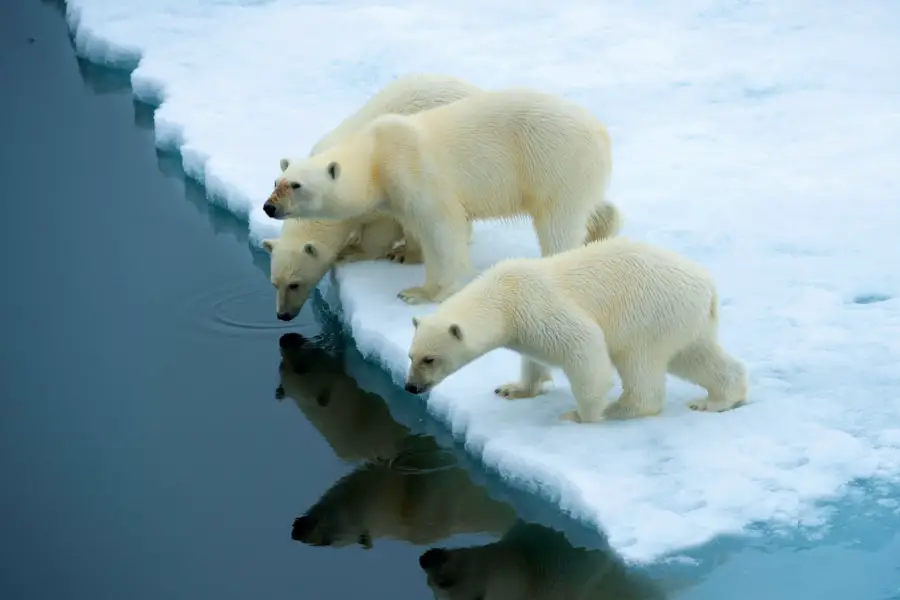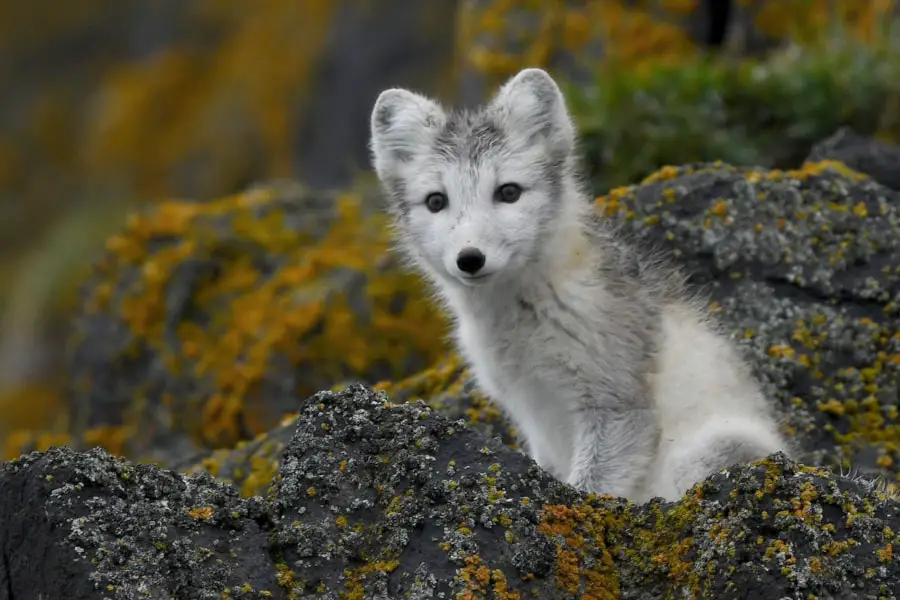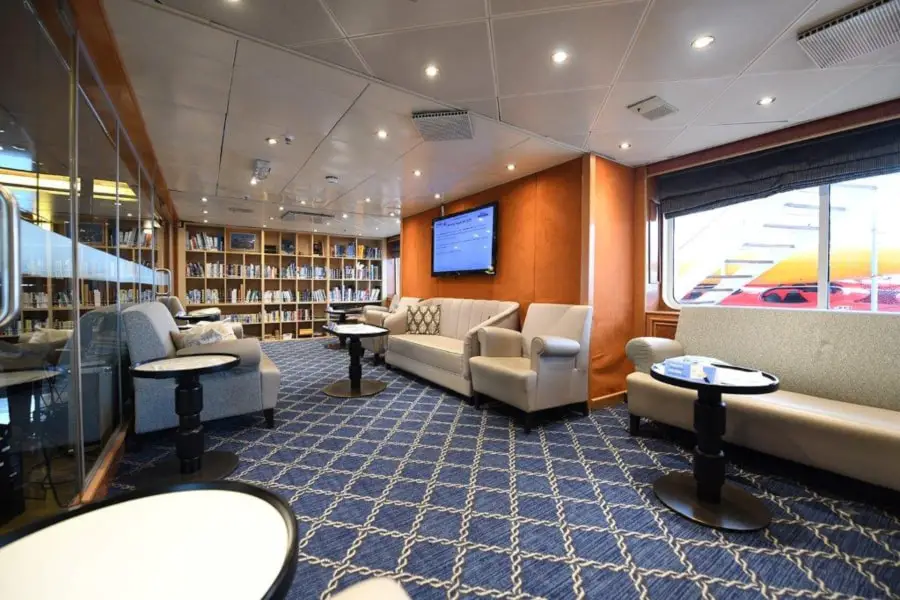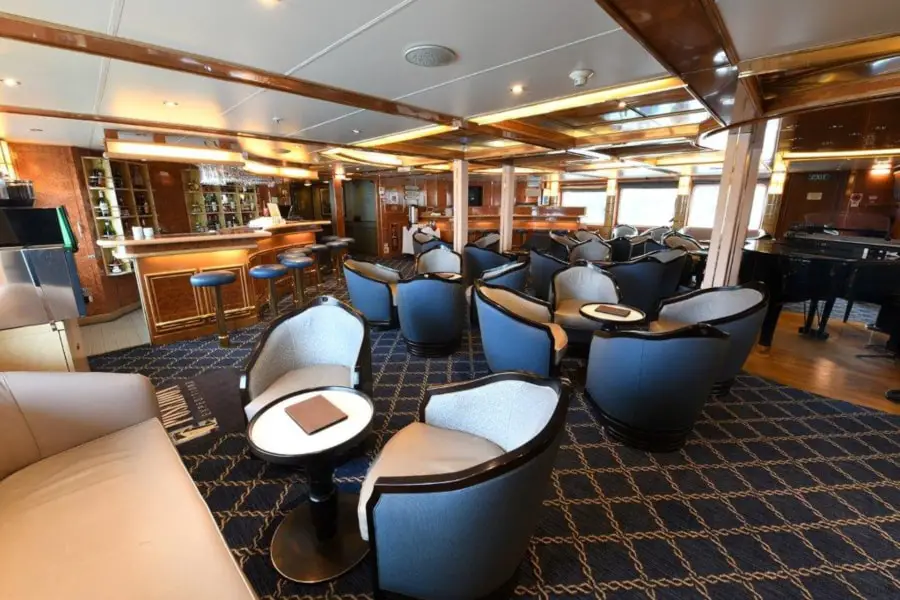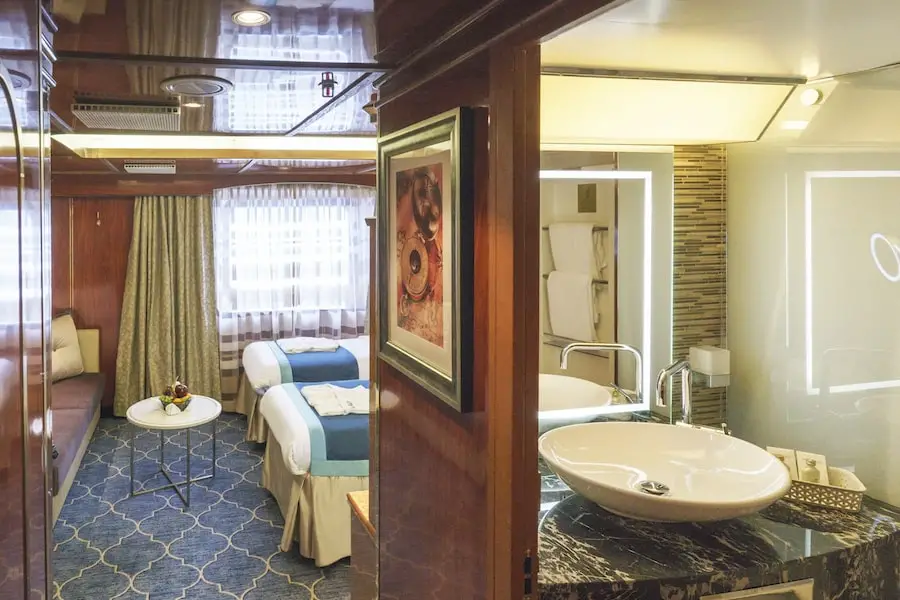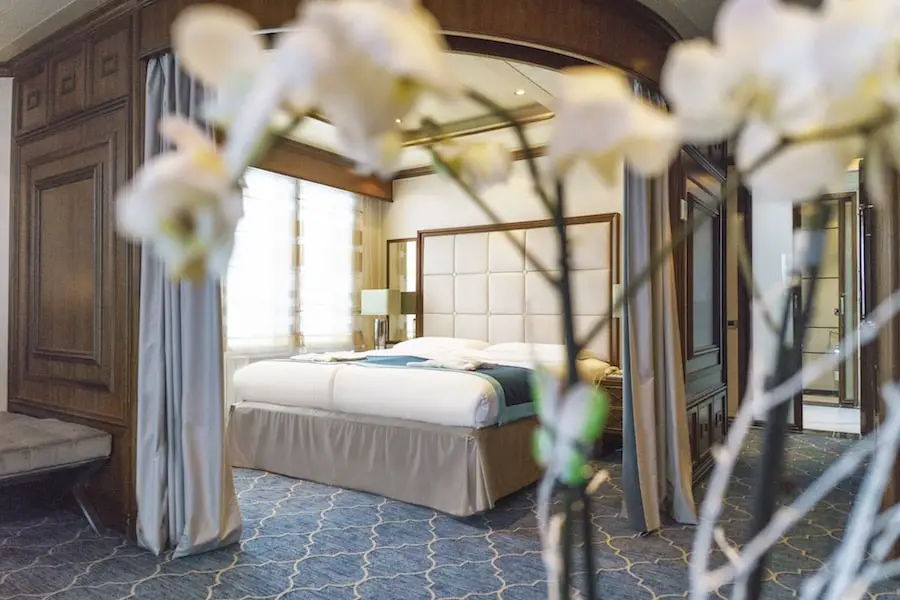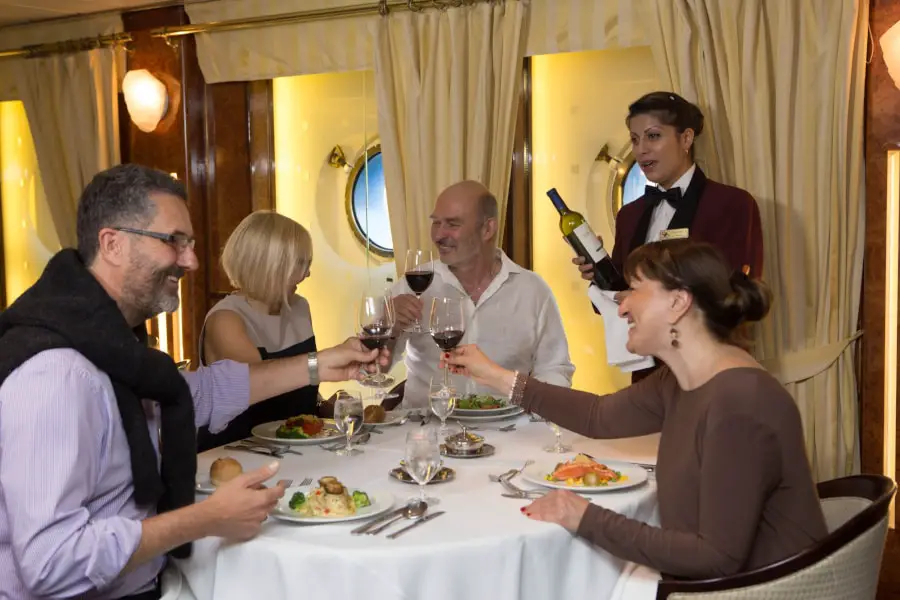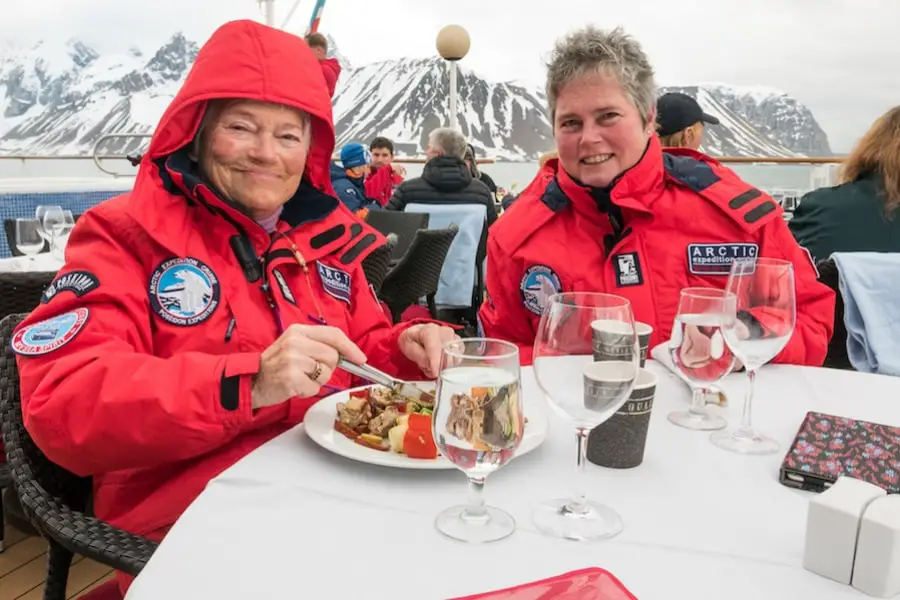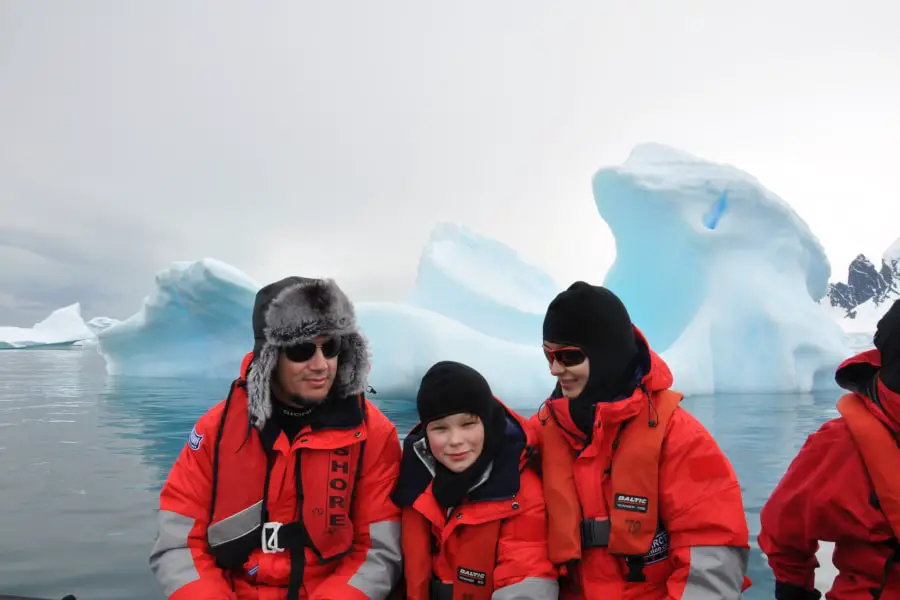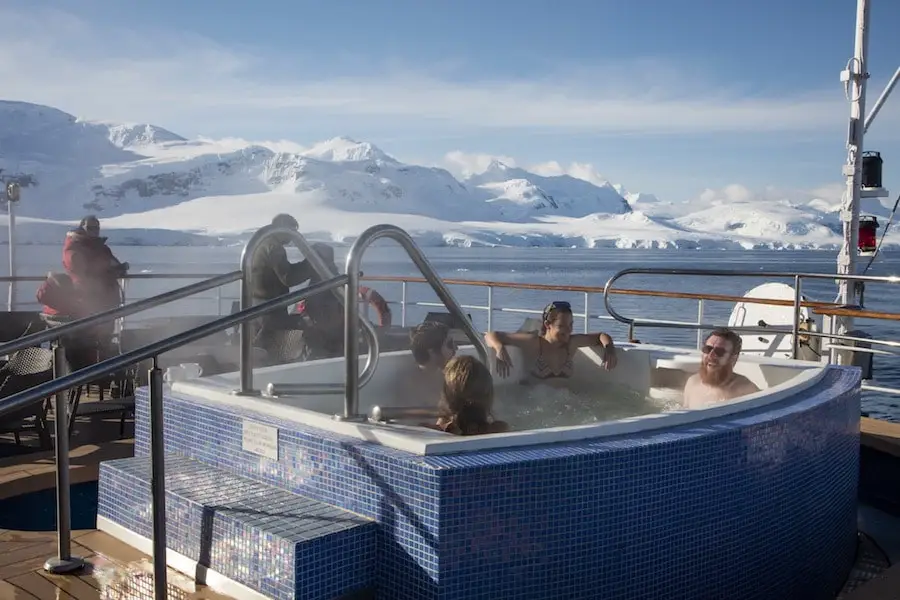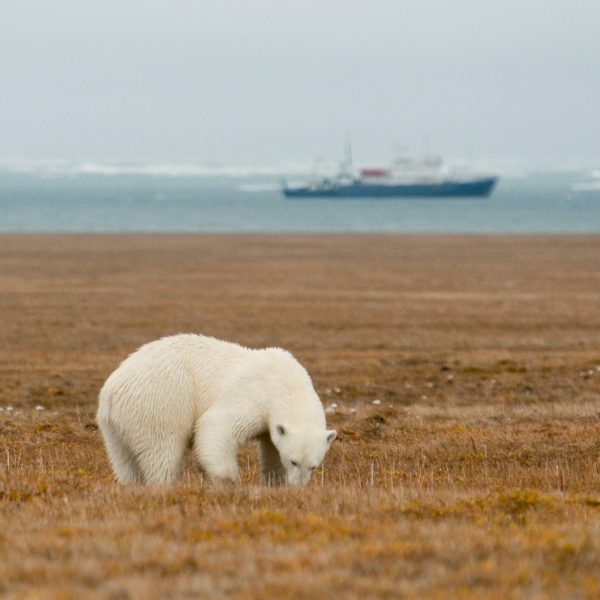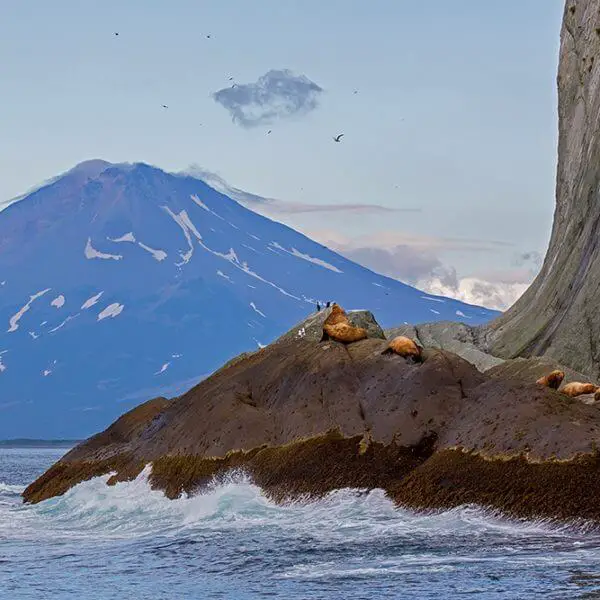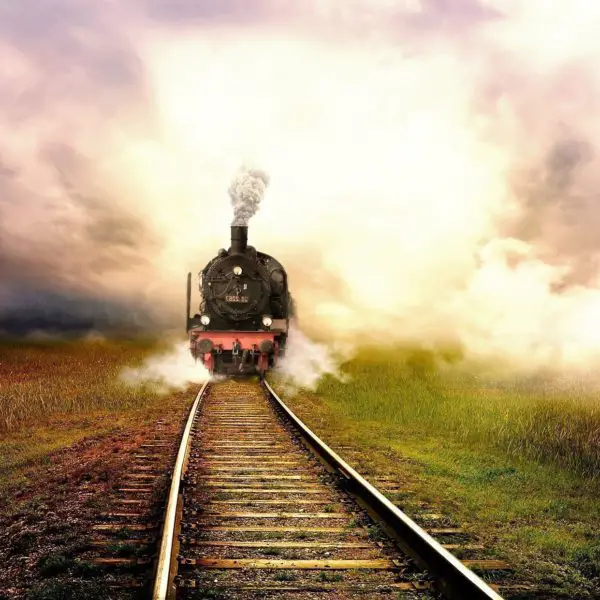The Majesty of Franz Josef Land - Cruising Russia’s Arctic Frontier
Roughly 1,000km from the North Pole lies Franz Josef Land, the world’s northernmost archipelago almost entirely covered by ice. The 190 islands in the Franz Josef chain are Russian territory – although some 3,800 polar bears who reside on the islands may disagree.
Only in the last few years has Franz Josef Land opened itself up to tourism, and up until now, a mere handful of pioneering visitors have set eyes on what remains one of the world’s most wild and mysterious polar realms.
These seemingly barren islands may not be your typical cruise ship destination, but therein lies their appeal. For the adventurous soul seeking to leave the trappings of human society behind, the untouched wilderness and extraordinary wildlife of Franz Josef Land await.
Table of Contents
Introducing Franz Josef Land
Covering 16,134 square kilometres (6,229 sq. mi) of the Barents Sea, the 191 islands of Franz Josef Land mark the most northerly extent of Russia’s territory. Beyond them, nothing but thousands of kilometres of deep, desolate Arctic Ocean stretch all the way to the North Pole itself.
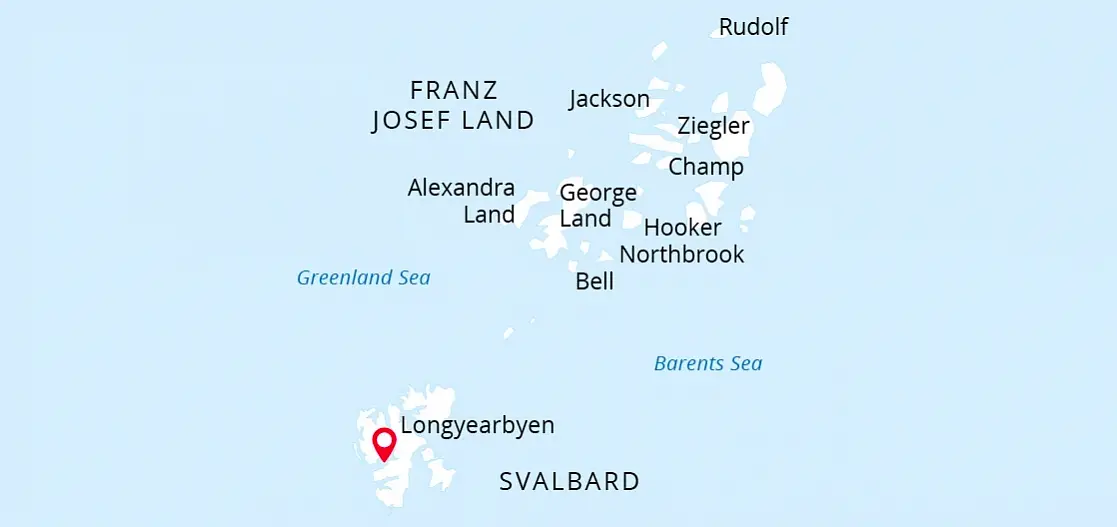
85% of the islands are completely frozen over by glacial ice, year-round. This uninhabited polar wilderness may seem like a strange place to go on a pleasure cruise, but in fact, these islands are anything but barren and lifeless. Part of the huge Russian Arctic National Park, one of the most important areas for ecotourism in the Arctic region, Franz Josef Land’s remoteness has made it a truly undisturbed paradise for all kinds of incredible wildlife.
Franz Josef Land is a harsh and breathtakingly beautiful kingdom of glacial valleys, wildflower-speckled tundra, moss, lichen and stone covered beaches, magnificent rocky headlands and vast polar deserts. Every year, around five million migratory birds nest on the archipelago. This is a birdwatcher’s paradise, providing shelter to over 41 species in total. The underwater world is similarly pristine – a feeding ground for an amazing abundance of marine mammals, including some of the world’s rarest whale species. The islands are also a sanctuary for the two great Arctic giants, the polar bear and the walrus.
As inhospitable to human life as these islands may seem, the spirit of human endeavour has made its mark on Franz Josef Land. Historical sites and ruins are still scattered around the archipelago to this day, remnants of the various expeditions who attempted to use the islands as a springboard to reach the North Pole. Later, the Soviet Union used Franz Josef’s extreme isolation to its advantage, establishing secret bases on the island. Today however, whilst around 150 hardened military personnel remain on the island of Alexandra Land, most humans visiting Franz Josef Land are researchers, Arctic cruise ship tourists and wildlife photographers.
At a latitude of between 80.0° and 81.9° north, Franz Josef Land is subjected to the peculiar conditions of polar day and night. Here, the polar night lasts an average of 128 days a year. During these completely dark winters, temperatures can plunge to below -30° C. The sea ice is completely frozen over, making passage between the islands all but impossible.
Cruises take place in the peak of summer, between mid-July and end of August, when temperatures occasionally rise just above zero, and visitors can take advantage of the 24-hours of sunlight to make the absolute most of wildlife viewing opportunities.
Franz Josef Fun Fact: On Franz Josef Land you can find a branch of the Post of Russia. Postcode 163100 on Hooker Island is the northernmost post office in the world. Incredibly, it is still in operation, but as the local postie only works an hour a week, you’ll have to be there between 10am and 11am on a Wednesday to send a postcard.
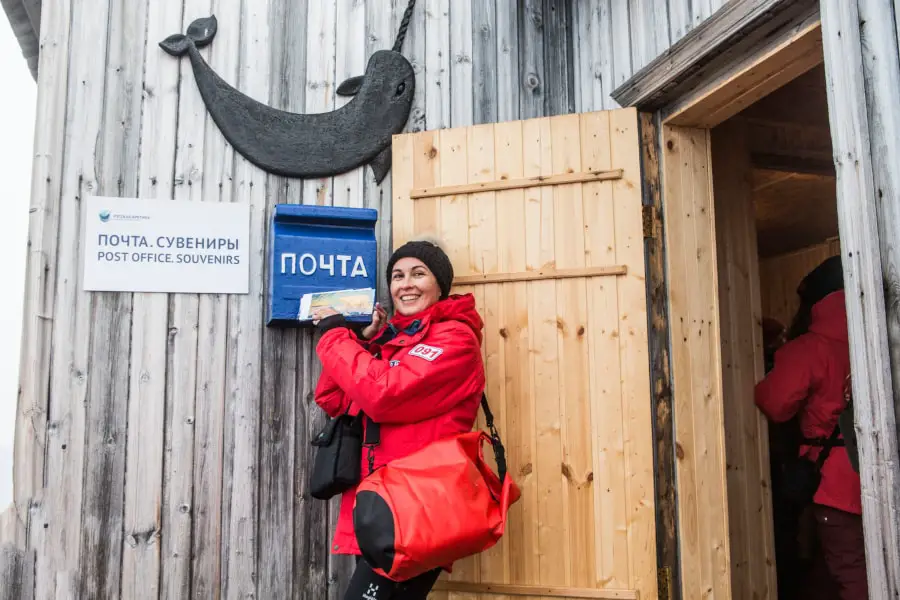
The most northern meteorological station in the world also operates on Franz Josef Land.
Exploration, Espionage and Environmentalism on Franz Josef Land
While there’s no doubt that animals are the dominant species in the unforgiving environs of Franz Josef Land, and despite being more-or-less uninhabited by humankind, this almost unimaginably isolated archipelago is associated with a strange, exciting and occasionally mysterious human history. The human story of Franz Josef Land is based largely around the exploits of the great Arctic Explorers, the secret military ambitions of the Soviets and modern-day initiatives to protect the islands’ fragile Arctic ecosystem and introduce carefully planned ecotourism to the region.
The Age of Explorers
In 1865, sailors on the Norwegian sealing vessel Spidsbergen, captained by Nils Fredrik Rønnbeck may well have been the first humans to lay eyes on the Franz Josef Land archipelago. They named their discovery Nord-Øst Spidsbergen (Northeast Spitsbergen), but their findings were never published, perhaps to keep there whereabouts a secret from other sealing and whaling vessels.
It wasn’t until 1872 that the wider world was made aware of the island chain’s existence, when the Austro-Hungarian North Pole Expedition of 1872 named the territory in honour of Franz Joseph I of Austria. This was the beginning of the Heroic Age of Arctic Exploration, when courageous mariners would set out on daring voyages in the hopes of marking their mark on the world map.
Several more expeditions to the island followed, but among the most ambitious was a series of attempts to use the archipelago as a wintering base before striking out for the North Pole in the summer. Three expeditions between 1898 and 1905 all proved unsuccessful, although they did contribute to further exploration and mapping out of the islands.
The Russians Take Charge
The first Russian forays into the far northern Arctic were rather more coordinated than the gung-ho efforts of the early explorers. Starting with the icebreaker Ymark in 1901, the Russian visits involved both exploration activities and increasing amounts of scientific research. The Russians declared sovereignty over Franz Josef Land in 1914 and the Soviet Union formally annexed the islands in April 1926. Norway and Italy protested, and Norwegian sealers (the folks who supposedly discovered Franz Josef Land in the very first place) defiantly continued to operate in the surrounding waters for several years. In 1929, Norway made a failed attempted to establish a base in the region.
After the failed Norwegian intervention, few expeditions visited Franz Josef Land, until the International Polar Year in 1932 revived interest in researching the polar regions. The Soviets then went about an extensive research program that latest several years. Sixty people spent winters on the islands between 1934 and 1936, and the region also saw its first airstrip constructed.
Human activity dwindled during WWII, which allowed the Nazis to secretly establish a base and weather station on Alexandra Land. However, the Germans evacuated the base in 1994 after the men were struck with trichinosis after eating polar bear meat. Russian scientists discovered the scattered remains of the base in 2016.
The Arctic’s Cold War Years
Franz Josef Land played a significant part in the Cold War. The Soviets regarded the archipelago as an “unsinkable aircraft carrier” and Alexandra Land the ideal place to construct an aerodrome and a military base. Known as Nagurskoye, it became Russia’s northernmost military base. Because of the islands’ military significance, the Soviet Union all but closed off the area to foreigners, although Soviet researchers carried out various scientific expeditions
The Modern Day Story
The military presence in Franz Josef Land began dwindling gradually from the early 1990s onwards. Russia declared the archipelago and its surrounding waters a nature sanctuary in 1994. It was a move that saw the first inklings of tourism on the islands, and in 2011, in a move to better accommodate ecotourism in the region, the Russian Arctic National Park was expanded to include Franz Josef Land. From 2011 to 2016, about 5,500 tourists from 60 countries visited Franz Josef Land. For now, tourist arrivals per year remain similar, although tourism is slowly expected to grow over the coming years.
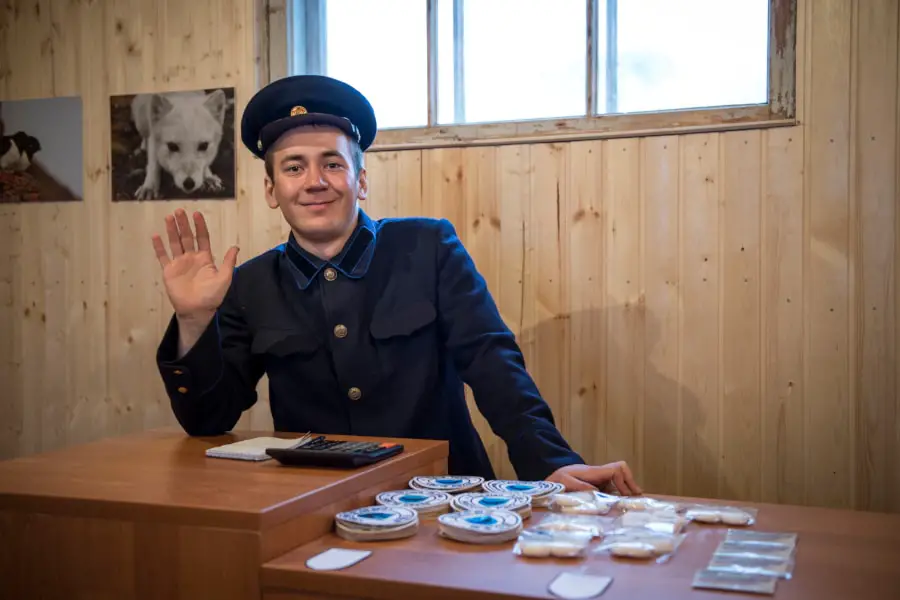
As part of a move to reopen several air bases in the Arctic, the Russian Air Force decided to reopen the Graham Belle Island airfield (a former Cold War outpost) in 2012. A new major base named the Arctic Trefoil was constructed at Nagurskoye in Alexandra Land. Here you’ll find almost the entire human population of Franz Josef Land. With an area of 14,000sqm, the base can accommodation 150 soldiers of 18 months at a time.
Plants, Birds and Wildlife of Franz Josef Land
Plants
Franz Josef Land’s harsh, freezing climates mean trees and other tall plants are unable to survive. Yet a few hardy types of flora bring a mosaic of colours to the islands of Franz Josef – at least those that aren’t covered by ice year-round. Mosses, and especially lichen are by far the most widespread plant species, as they thrive in the arctic desert environment below 315m. Above that altitude, the environment is largely lifeless snow desert, although occasional lichens and snow algae manage to survive on glacier surfaces.
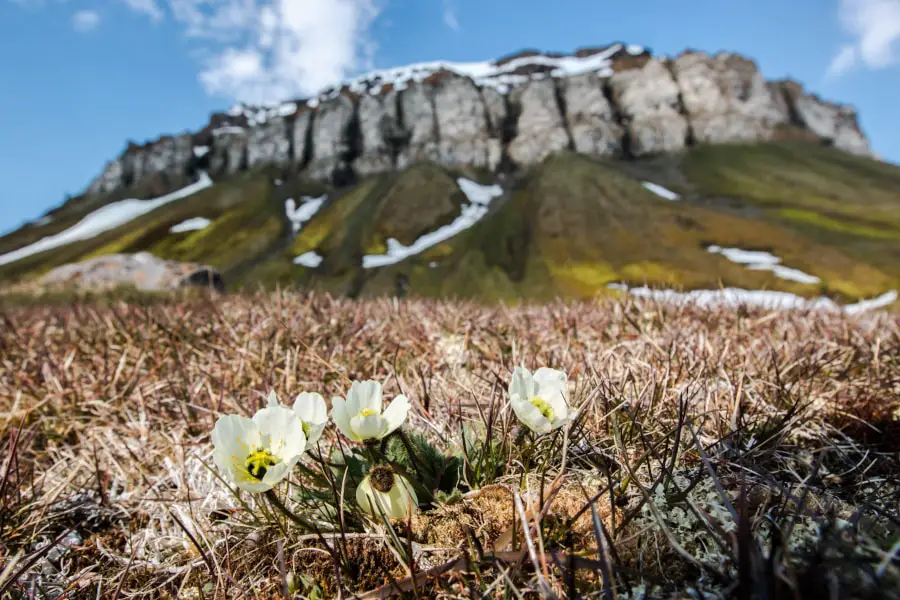
Amazingly, alpine wildflowers grow abundantly on several of the islands. In spring, the tundra bursts into life with the yellow flowers of Arctic poppy and buttercup as well as tiny white saxifrage blooms. In wet areas, alpine foxtail grass and polar willow, a dwarf shrub, provide cover for Arctic foxes on the hunt for nesting birds.
Birds
One of the most spectacular natural phenomena on Franz Josef Land are the enormous numbers of migratory seabirds that come to nest year in the brief but bountiful summer months. The sea cliff rookeries are truly immense, absolutely swarming with Brunnich’s guillemots, black guillemots, little auks, northern fulmars and black-legged kittiwakes.
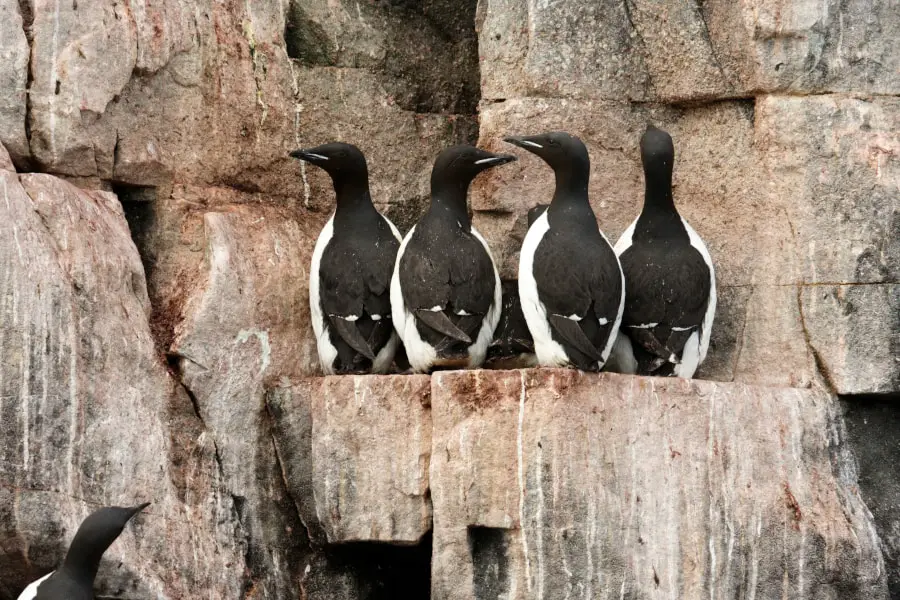
A little further inland, the scree slopes and flat tundra host enormous nesting colonies of purple sandpiper, Arctic skua, glaucous gull, ivory gull, Arctic tern and snow bunting. While most seabirds only come on shore for breeding, spending most of their life at sea, a few will remain on the islands over winter.
Land Mammals
Life in the Arctic seas and skies is far more abundant compared to shore. With little in the way of nutritious vegetation, the islands simply can’t support mammals who depend on land for their survival. There is one exception, however. The Arctic fox, in its silver summer coat, is often seen bounding between dens amid the nesting seabird colonies. Always on the hunt, these agile predators do well in Franz Josef, with an endless supply of fledglings and eggs to feast on.
Two other iconic land mammal species inhabit the archipelago, but unlike the fox, much of their food comes from the sea.
Franz Josef Land is one of the best places in the world to observe the king of the Artic – the polar bear. The bear population on the island is estimated to be around 3,800. Spotting them close to shore is rarely difficult. Wherever there is ice – and seals – a hungry polar bear is bound to be nearby. Polar bears are most commonly seen wandering the frozen coastlines around the island, waiting for seals to pop up from their breathing holes in the ice. Occasionally, a washed up whale carcass can bring large numbers of scavenging bears on to a beach where they will feast until nothing but bones remain.
Franz Josef Land is also famous for its walrus colonies. Dozens of these colossal animals at a time will haul out on a stretch of beach, making for an impressive sight indeed. Since the end of the early seal-hunting days and the conversion of Franz Josef Land to a protected wildlife sanctuary, numbers of walruses and other pinnipeds such as Stellar’s sea lions, northern fur seals and ringed seals have returned up to, or close to, their pre-hunting numbers.
Marine Mammals
The pristine waters around Franz Josef Land are blessed with plentiful fish and marine invertebrates, making these islands some of the most productive for spotting marine mammals on the planet. Apart from the healthy populations of seals and sea lions, Franz Josef Land harbours an amazing variety of cetacean species. Franz Josef has been declared a marine mammal sanctuary and is a critically important habitat for some of the rarest whales in the world.
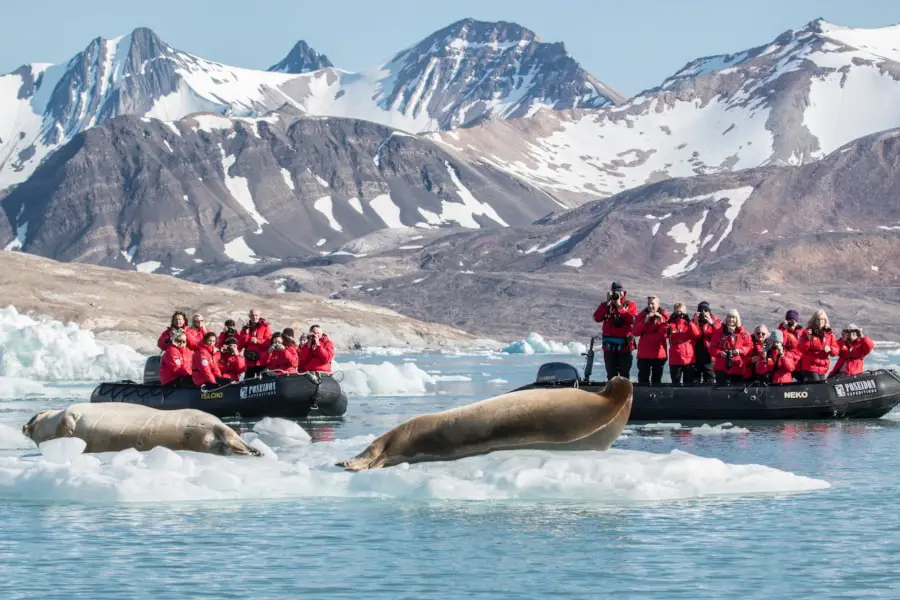
Northern minke whales, humpbacks and white beluga whales are commonly spotted, along with the less commonly sighted orca and narwhal. These protected waters are also home to the elusive bowhead whale, which is endangered in much of the Arctic.
Cruising Franz Josef Land – What to Expect
If you’ve read this far, you’ll know that a cruise trip to Franz Josef Land is far from your ordinary pleasure cruise. On a 14-day summer expedition voyage, you’ll be travelling onboard the M/V Sea Spirit, a specially designed polar vessel with an ice-strengthened steel hull – the only feasible means of travelling around and in between the islands of the archipelago. Think of a Franz Josef cruise as more of a remote expedition than a high seas vacation – only this expedition includes the luxurious amenities and polished service of a fine hotel!
Remember though, while the Sea Spirit has been designed for maximum comfort, the Arctic seas are still renowned for their unruly temperament and taking precautions against seasickness is strongly advised.
At the Home Port
All expeditions to this part of the Arctic start at the port of Longyearbyen in Svalbard, Norway. The world’s northernmost settlement is no stranger to tourists, and it’s quite likely you’ll spend a night here before departing on your Arctic adventure. Although home to less than 2,200 permanent inhabitants, the town’s significant role in Arctic research and tourism has left its mark, and Longyearbyen is surprisingly cosmopolitan for a town where reindeer and polar bears regularly roam the streets, and snowmobiles far outnumber cars.
If you find yourself with time to kill in Longyearbyen, be sure to check out the Svalbard Museum and North Pole Expedition Museum. The Global Seed Vault (the world’s only safety net against a catastrophic wipe-out of global food crops) is also located near Longyearbyen, but you can join informative organised tours with guides that take you close to the so-called “doomsday” vault’s entrance.
At Sea
With vast distances to cover, you’ll be spending a fair amount of time at sea, much of it out on the open ocean on the Barents Sea between Svalsbard, Kamchatka and Franz Josef Land.
While you may wish to take a few days to acclimatise to the movement of the ship and gain your “sea legs”, there’s always plenty happening on the days we won’t be visiting an island or stretch of coastline.
There will be onboard lectures about the Arctic such as talks on the history of Arctic exploration, wildlife conservation, geology and modern-day environmental challenges. The crew will also give you advice on photography to ensure your photos are worthy of the front page of National Geographic! Up on the open top deck, birding enthusiasts will also have the opportunity for to look for cruising seabirds as they scan the open ocean, and occasionally use the Sea Spirit as a welcome place to rest.
While only a small passenger cruise ship (accommodating a maximum of 114 passengers), the Sea Spirit has all the amenities you’d expect from a boutique passenger liner (head over to the “Meet the M/V Sea Spirit” chapter to find out more).
Things to Do in Franz Josef Land
Our Zodiac tenders will deliver passengers ashore on several islands in the Franz Josef Land archipelago. Access to individual islands will depend on sea and weather conditions, time constraints and wildlife activity on the islands.
Below are just some of the fascinating potential “ports of call” you might set foot on or explore by Zodiac during your time in the Franz Josef islands.
Marvel at the Mysterious Stones of Champ Island
One thing sets Champ apartment from the rest of the islands in Franz Josef Land are the bizarre, ball-shaped stones scattered all over the island. These perfectly round spheres, ranging in size from a few centimetres to massive boulders several metres in diameter, make Champ Island look more like a scene from a Martian sci-fi movie than a remote Arctic outpost.
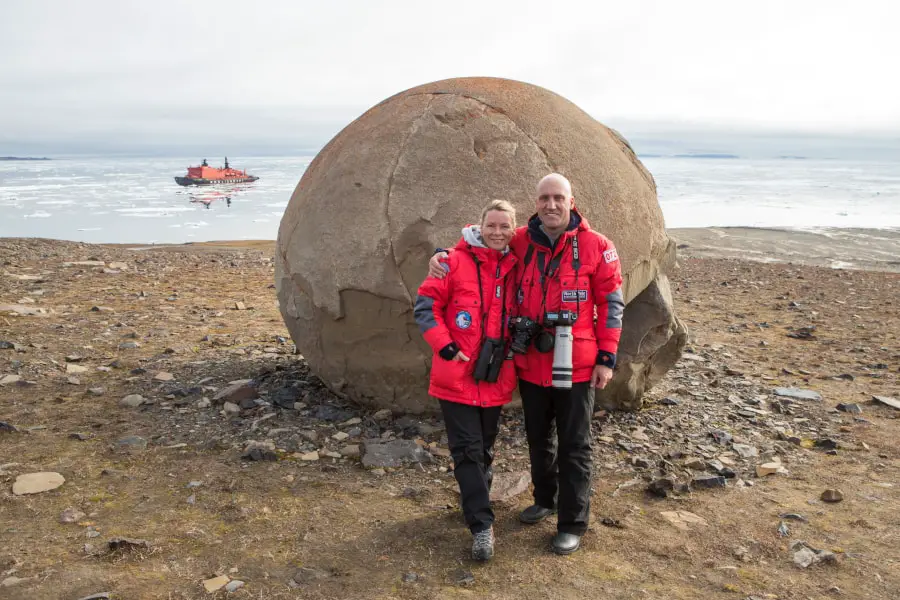
The origin of the Champ Island stones remains a mystery, but one theory is that their appearance is the result of being formed underwater before they were brought ashore by a catastrophic tidal event. While geologists continue to argue over their conception, photographers have been busy snapping away spectacular images of these strange natural wonders.
Admire Majestic Rubini Rock on historic Hooker Island
Tikhaya Bay (Calm Bay) provides a safe anchorage at the base of Rubini Rock – a remarkable rock formation whose splinter-textured surface has been intricately carved into curved columns of basalt rock and overgrown with bright green and orange moss. Approach Rubini Rock and you’ll hear a cacophony of seabird song.
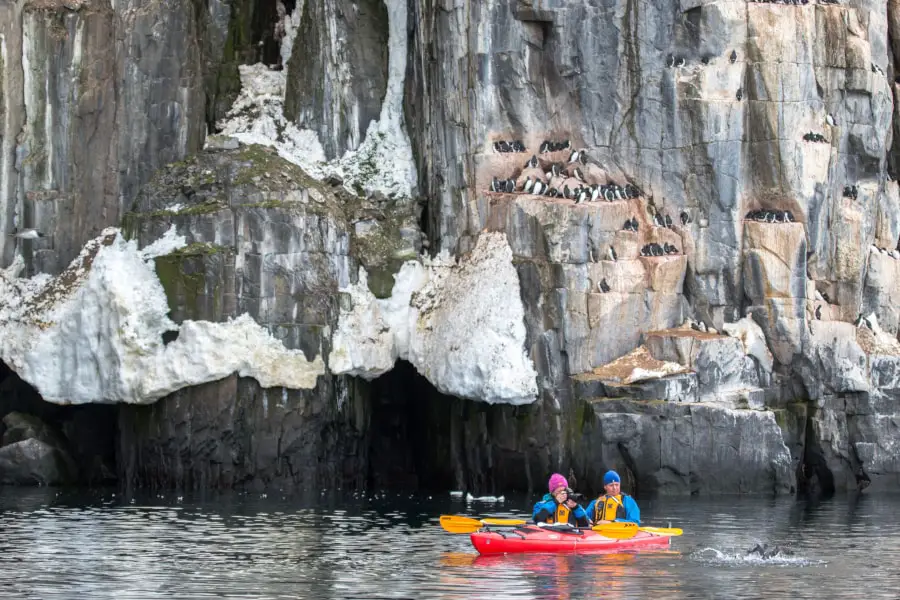
The rock is the largest breeding bird colony in the archipelago, providing prime real estate for thousands of little auks and Brunnich’s guillemots. Polar bears sometimes wander along the island’s shore, where the ghostly remains of a Russian research station still stand, having operated between 1929 and 1959.
Cruise alongside giants at the Apollonoff and Stolichka Island walrus colonies
Together, these two islands form the largest known walrus haul-out in the archipelago. Up to 1,000 animals crowd the rocky shoreline, the majority of the females and calves – prime prey for lurking polar beers. Arctic terns, common eiders and colonies of little auks and glaucous gulls also find homes in this dramatic, windswept wilderness.
Walk amid the colourful landscapes of Cape Flora on Northbrook Island
Northbrook Island is located on the southern edge of Franz Josef Land. As one of the most accessible islands in the archipelago, it often served as a base for polar expeditions in the late 19th and early 20th centuries. On Cape Flora, you’ll find the remains of a relatively intact settlement from the Jackson expedition.
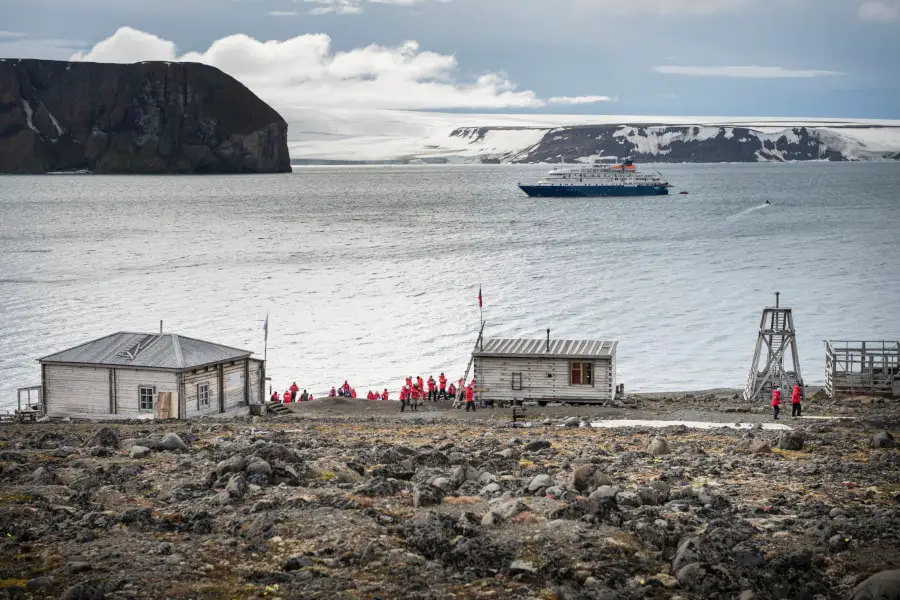
Cape Flora lies in an unglaciated part of Northbrook and is characterised by some of the most impressive scenery and colourful tundra vegetation on the island. The slopes above the lowland are a dazzlingly beautiful sight in an otherwise barren landscape, covered in thick, vivid green moss and dotted with Arctic flowers. Here, there’s a good chance of witnessing young guillemots stretching their wings near their nesting sites and foraging arctic foxes.
Look out for patrolling polar bears on Jackson Island
Jackson Island is one of the best places in Franz Josef to spot polar bears. The bears regularly roam up and down the coastline, whose waters are also frequented by narwhals and belugas. These rarely seen Arctic beauties are here encountered quite regularly on our Zodiac cruises around the island.
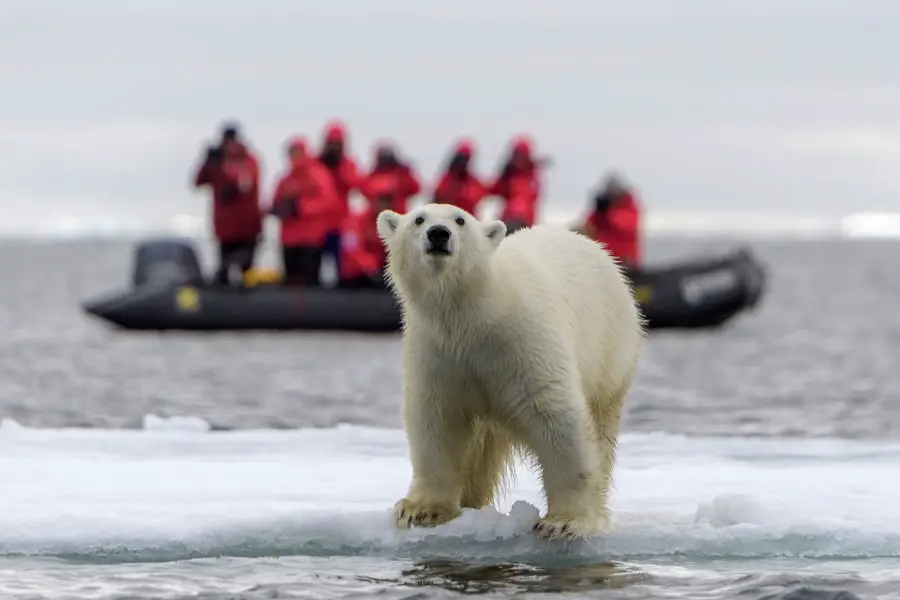
Jackson Island is where Norwegian explorers Fridtjof Nansen and Hjalmar Johansen spent the winter of 1895 to 1896 after an attempt to reach the North Pole. The remains of their wintering site can still be seen on Cape Norvegia. Here, you can stroll among beautiful carpets of red moss and tundra wildflowers including poppies, saxifrages, buttercups and dwarf willows, while black-legged kittiwakes from the nearby colonies circle overhead.
Photography workshops
The Arctic is perhaps one of the most photogenic regions on earth, with countless beautiful scenes presenting themselves every day. Endless expanses of ice, beaches crowded with seals and birds, sunsets over unbroken horizons, starlit skies – they all present fantastic photographic opportunities – and in order to make sure that you come home with some spectacular images we offer you the chance to learn and practice your photography alongside an experienced professional.
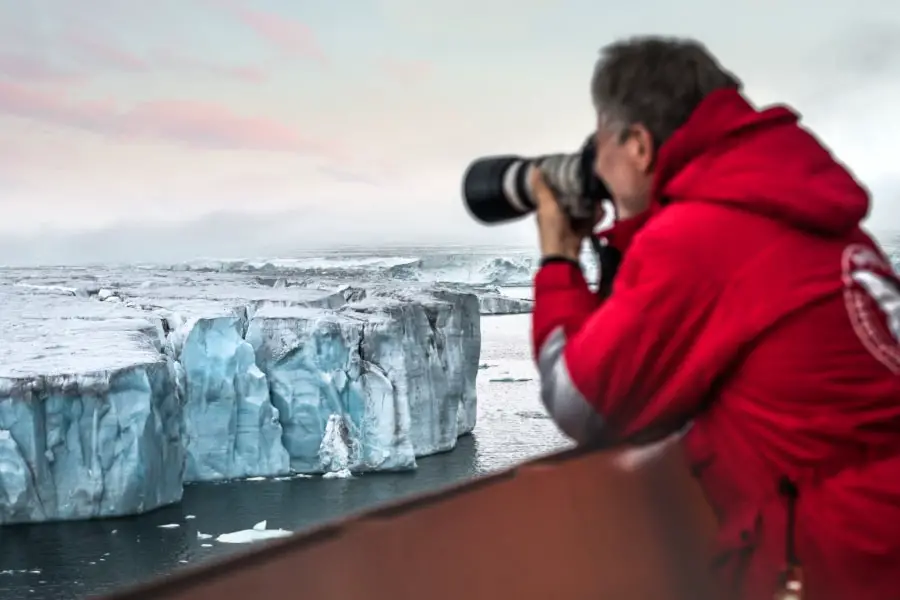
The expert Photographer will be on hand to answer your questions and give advice, both in the form of on-board lectures and workshops on shore. Explore the key elements of photography in a fun and relaxed setting, with plenty of opportunities for questions and feedback. Learn how to see light in a new way and experiment with the techniques of composition and framing.
Sea Kayak Club
The Arctic is a paddlers’ paradise. The White Continent boasts some of the world’s most impressive landscapes and is home to incredible marine wildlife. Sea Kayak Club offers the opportunity to paddle through tranquil waters filled with glittering.
Meet the M/V Sea Spirit
There’s only one way to safely navigate the ice-strewn waters of the northern Arctic Ocean, and that’s on a ship that’s been custom-built to sail through the frigid seas with ease.
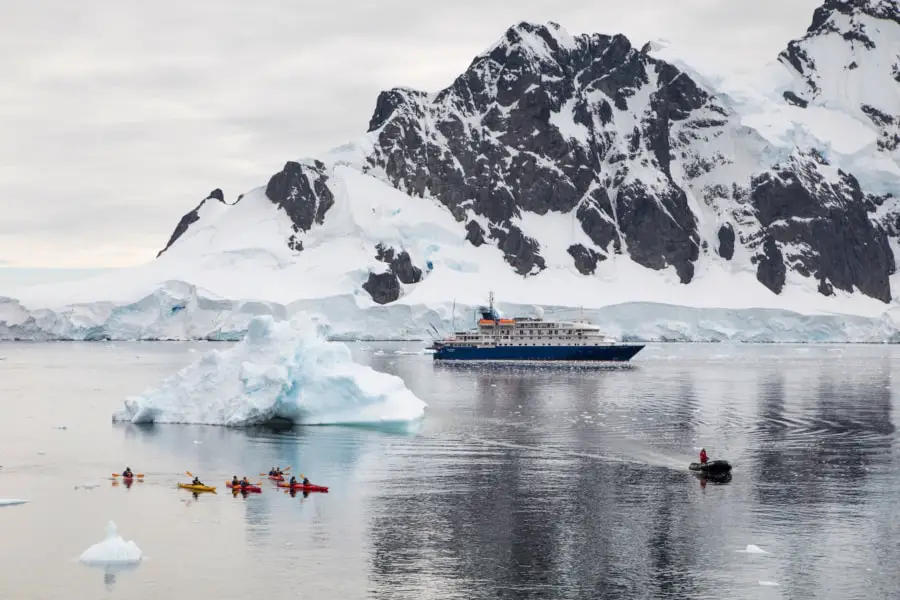
Join us on our epic voyage to Franz Josef Land and the faithful steed to carry us through this adventure will be the ice-strengthened expedition vessel, the Sea Spirit. She is built for sailing in ice with an ice-strengthened hull and retractable fin stabilizers that help deliver smooth sailing and play an important part in ensuring your polar expedition is enjoyable and safe. Sea Spirit carries a fleet of 10 rigid inflatable Zodiac tenders allowing passengers to cruise close to coastlines from prime wildlife view opportunities, and land ashore on island beaches.
Sea Spirit was built in Italy in 1991, updated in 2010 and then underwent a $2.5 million dollar refurbishment in 2017. The luxuriously upgraded suites can accommodate 114 passengers, and with a crew of up to 72 onboard, the friendly atmosphere onboard is that of a small cruise liner.
The Sea Spirit is a migratory ship. As one of the few ice-strengthened, luxury passenger cruise ships in the world, she is in demand in both polar regions, and so her movements follow the sun, offering Arctic cruises from March to September and Antarctic expeditions during the southern hemisphere’s summer.
While the Sea Spirit is built for adventure first and foremost, she is one of the few vessels patrolling the Arctic that hasn’t skimped on luxuries. All 114 suites have private facilities and exterior views. Some have private balconies for gazing out over the fantastic landscapes of the Franz Josef archipelago.
Facilities onboard
- You’ll find spacious common areas for socialising and relaxing spread across the Sea Spirit’s five decks
- An elevator provides easy access to all the passenger decks
- On the after of the Main Deck, the Zodiac landing platform allows for quick deployment of passenger landing craft
- The Sports Deck features a soothing hot tub, a well-equipped gym and a bistro
- The Club Deck library hosts a large collection of books and DVDs on polar exploration and wildlife
- On the Ocean Deck, a Presentation Lounge is specially equipped to host lectures, recaps and briefings
- The ship has its own infirmary with a licensed medical doctor on board at all times
Days at sea can be spent at your leisure or listening in on fascinating lectures from our multi-lingual team of experts or enjoying the company of your fellow explorers with a range of inviting social spaces.
With a full-service bar, wine and spirits flow freely throughout the cruise along with hot and cold refreshments available around the clock. International style four-course meals are prepared nightly by our expert chefs. The Bistro on Deck 5 provides a stunning outdoor setting for lunch, weather permitting, and the perfect place to celebrate special occasions with guests on board. The Club Lounge hosts nightly live music and entertainment, providing the perfect retreat to finish off another long day in the life of an Arctic adventurer.
Franz Josef Land, Земля Франца-Иосифа, 2010 from Sergey Murzaev on Vimeo.
For the Franz Josef Land Cruise dates and rates please see the cruise details. For availability, please contact us via [email protected].
Related posts
Related Tours
If you have any urgent questions or enquiries, please give us a call +61 412 587 785
